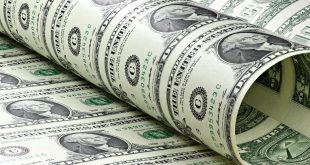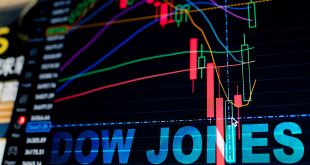Financial assets’ price moves along past week have been led by a number of major developments most notably: the US non-farm payrolls data shortly after the US debt ceiling deal, as well as the European inflation data.
Oil Prices Hope For More Optimism
Oil prices rallied for the second day on Friday as global markets breathe a sigh of relief after the US Senate votes through the debt-ceiling extension bill, vaulting the final hurdle prior to implementation. The possibility of OPEC+ announcing more production cuts at its June 4 meeting further supports Oil.
Optimism is a key headline for oil prices with the new trading week, WTI crude oil pares intraday gains around $73.20, after the week started with a gap towards the north, as headlines suggesting challenges to the Oil output contrast with the US Dollar’s run-up. Also likely to weigh on the black gold could be the cautious mood ahead of the key China and US data, as well as the risk risk-off mood. The Organization of the Petroleum Exporting Countries and allies led by Russia, collectively known as OPEC+, agreed on a new output target of 40.46 million barrels per day (mb/d) from 2024 during its June 4 Ministerial meeting.
NFP data in play
Gold futures have been declining since the opening of US trading session on Friday, post the US NFP data which played in favour of Treasury bond yields benefiting the US dollar, after indicating a rise in US job growth.
The USD Index rose to 104.02 points compared to the daily closing recorded last Thursday at 103.56 points. The dollar index fell to its lowest level in the current trading day at 103.38 points, compared to the highest level, which scored 104.03 points.
The US economy added 339,000 jobs in May 2023, above estimates and the highest in four months, outperforming by a wide margin the market expectation of 190,000 jobs. Additionally, the figures for March and April were revised upwards, bringing the number of jobs to 93,000 more than previously reported.
The figures continue to point to a tense labor market, with jobs in the hospitality and leisure sector still on the rise. The sector added an average of 77,000 jobs per month over the previous 12 months.
Against the background of this data, the Dollar Index, which measures the performance of the US currency against a basket of major currencies, rose following the announcement of US employment data, which highlighted the rise in job growth in the United States.
US Stocks
On Friday, Dow jumped 700 points on the US hot jobs report as Nasdaq notched sixth straight winning week. The Dow Jones Industrial Average surged for its best day since January as traders cheered a strong jobs report and the passage of a debt ceiling bill that averts a US default.
Recently, strong employment data had been pressuring stocks on the notion it would keep the Federal Reserve raising interest rates. But Friday’s data also showed average hourly earnings rose less than economists expected year over year, while the unemployment rate was higher than anticipated.
The CBOE Volatility Index — also known as Wall Street’s “fear gauge” as it approximates expectations for how much the S&P 500 will rise and fall in coming weeks — closed Friday at 14.60, its lowest since Feb. 19, 2020, shortly before the Covid pandemic closed the economy.
European inflation data
The latest data, published by Eurostat on Thursday, showed that the annualized Eurozone Harmonized Consumer Price Index (HICP) in May compared to 7.0% in April. The HICP Inflation Index exceeded expectations for an increase of 6.3%. However, the HICP Core Inflation Index fell to 5.3% y/y in May versus expectations for a 5.5% rise, down from April’s figure of 5.6%.
On a monthly basis, the HICP index in Continental Europe did not register any growth in May compared to the 0.6% increase in April.
Core inflation rate (HICP) came in at 0.2% for the month, compared to the expected 0.8% and 1.0% in April.
Elsewhere, European Central Bank (ECB) President Christine Lagarde said in an appearance on Thursday: “We need to continue the cycle of rate hikes until we are sufficiently confident that inflation is heading back to our target in time.” “Inflation is very high and is expected to remain so for a long time,” Lagarde added.
In the same context, Lagarde explained that “increases in interest rates already have a strong impact on bank lending conditions,” stressing, “We cannot yet say that we are satisfied with our view of inflation.”
Debt ceiling bill passed
After weeks of difficult negotiations, the debt ceiling agreement enters into force after US President Joe Biden signed, Saturday, the bill that was recently passed in Congress, and provided for raising the government’s debt ceiling to more than $ 31.4 trillion. The last-minute agreement between Biden and House Speaker Kevin McCarthy avoided entering the country into an economic vortex that would have become the first ever American default in debt repayment.
This stipulated the agreement to raise the debt ceiling for two additional years, which means that the White House will not have to negotiate it again before the 2024 presidential elections.
Easing concerns around the debt ceiling also helped sentiment. The Senate passed a bill to raise the debt ceiling late Thursday night, sending the bill to President Joe Biden’s desk. That comes after the House passed the Fiscal Responsibility Act on Wednesday, just days before the June 5 deadline set by U.S. Treasury Secretary Janet Yellen.
The week ahead:
The trading week starting tomorrow, June 5th, is marked by some calm, especially after the passage of the debt ceiling agreement yesterday. Only the US will release ISM Services PMI and Factory Orders.
 Noor Trends News, Technical Analysis, Educational Tools and Recommendations
Noor Trends News, Technical Analysis, Educational Tools and Recommendations





